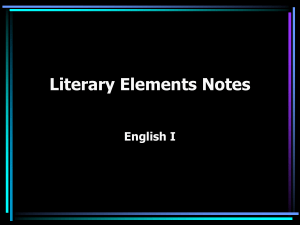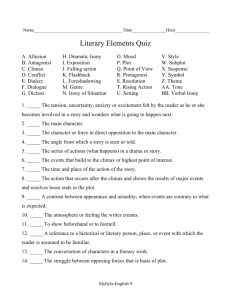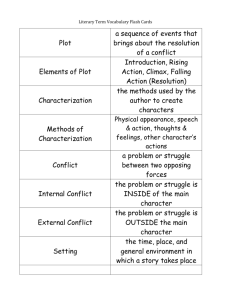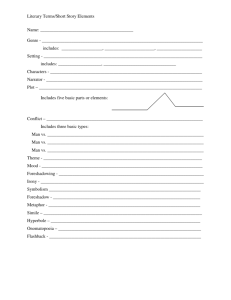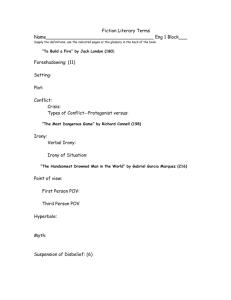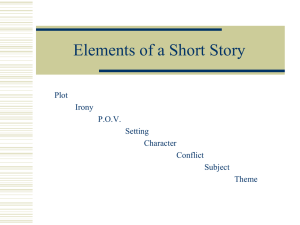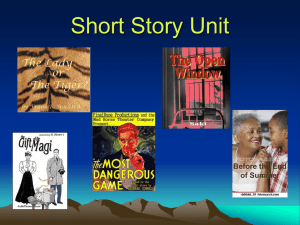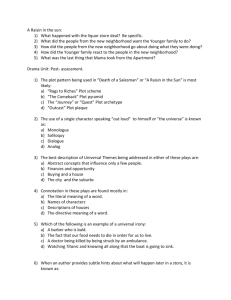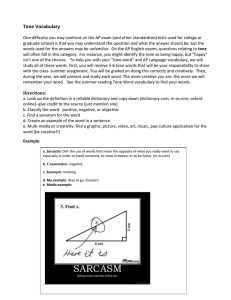File - English with Mr. Feeley
advertisement
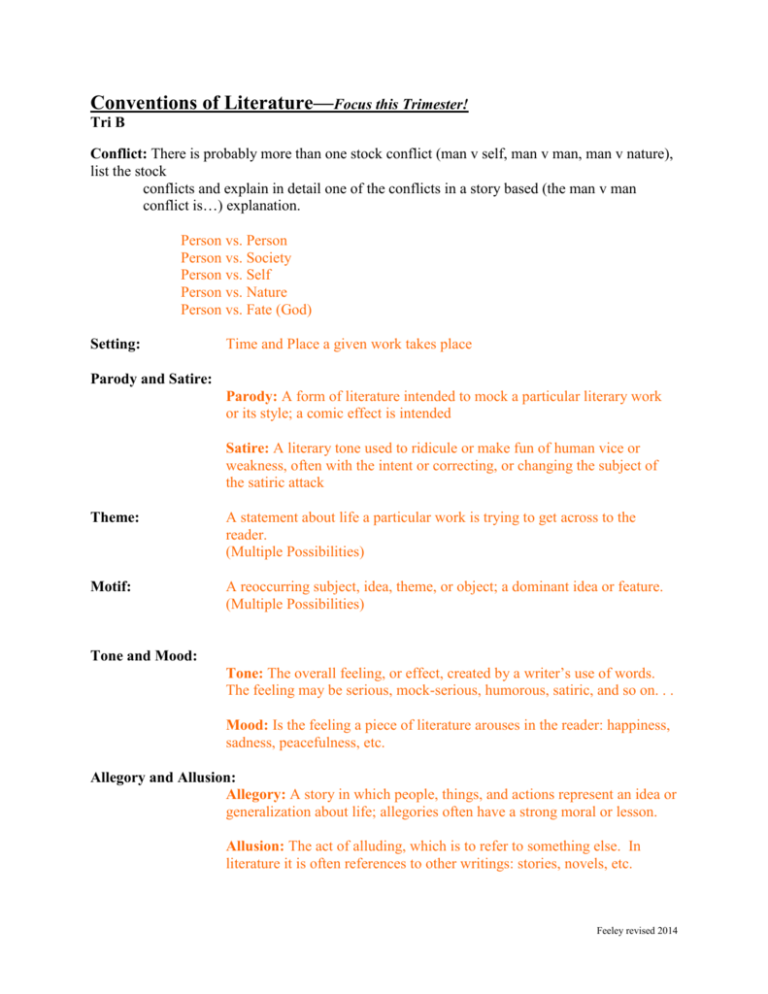
Conventions of Literature—Focus this Trimester! Tri B Conflict: There is probably more than one stock conflict (man v self, man v man, man v nature), list the stock conflicts and explain in detail one of the conflicts in a story based (the man v man conflict is…) explanation. Person vs. Person Person vs. Society Person vs. Self Person vs. Nature Person vs. Fate (God) Setting: Time and Place a given work takes place Parody and Satire: Parody: A form of literature intended to mock a particular literary work or its style; a comic effect is intended Satire: A literary tone used to ridicule or make fun of human vice or weakness, often with the intent or correcting, or changing the subject of the satiric attack Theme: A statement about life a particular work is trying to get across to the reader. (Multiple Possibilities) Motif: A reoccurring subject, idea, theme, or object; a dominant idea or feature. (Multiple Possibilities) Tone and Mood: Tone: The overall feeling, or effect, created by a writer’s use of words. The feeling may be serious, mock-serious, humorous, satiric, and so on. . . Mood: Is the feeling a piece of literature arouses in the reader: happiness, sadness, peacefulness, etc. Allegory and Allusion: Allegory: A story in which people, things, and actions represent an idea or generalization about life; allegories often have a strong moral or lesson. Allusion: The act of alluding, which is to refer to something else. In literature it is often references to other writings: stories, novels, etc. Feeley revised 2014 Symbols: (list them and explain possible significance) Something in the literature that represents something else: Santa=Christmas, dove=peace Point of View: What is it; how do you know? (What are the differences between first and third person perspectives?—definition sheet) Point of View: Perspective from which the story is told · -person: narrator is a character in the story; uses “I,” “we,” etc. · -person: narrator outside the story; uses “he,” “she,” “they” · -person limited: narrator tells only what one character perceives · -person omniscient: narrator can see into the minds of all characters. Foreshadowing: (list one example) The giving of hints and clues of what is to come later—best seen in hind-sight. Imagery: (give one good example) The words or phrases the author uses to create an image in the readers mind—usually based on sensory detail 1. a statement or proposition that seems self-contradictory or absurd but in reality expresses a possible truth. 2. a self-contradictory and false proposition. 3. any person, thing, or situation exhibiting an apparently contradictory nature. 4. an opinion or statement contrary to commonly accepted opinion. Paradox: Dialogue: —some possible purposes: emotion, exposition, setting, develop character, developing character relationships—how is it used in our story? Irony: the use of words to convey a meaning that is the opposite of its literal meaning: the irony of her reply, “How nice!” when I said I had to work all weekend. Dramatic Irony: irony that occurs when the meaning of the situation is understood by the audience but not by the characters in the play Situational Irony: irony involving a situation in which actions have an effect that is opposite from what was intended, so that the outcome is contrary to what was expected. Feeley revised 2014 Points of plot and plot of the story: (What’s the difference?—definition) Exposition/ intro: Points of plot set out the outline of a work in a patterned academic sense, while the plot is an overview or review of a work that derives its core from the points of plot but may or may not be inclusive of an entire work depending on the thoroughness of the review. Rising action: Climax: Falling action: Resolution/ dénouement: Dialect: What is it? Are there any influences of dialect in this piece? Motif: 1. a recurring subject, theme, idea, etc., esp. in a literary, artistic, or musical work. 2. a distinctive and recurring form, shape, figure, etc., in a design, as in a painting or on wallpaper. 3. a dominant idea or feature: the profit motif of free enterprise. Author’s Purpose: (literary intent) What are the goals of the work, which can be author intended but do not have to be. The key thing impacting intent is audience and focus or perspective. A work may look much different depending on point of view—academic, social, feminist, cultural, etc. Attitude: Shows an angle—gives the reader or audience a clue to what position or side an author is on or is supporting. This is connected to a thesis statement for academic writing. Example: a paper on gun control should give an angle that the writer is taking: for or against guns. Coherence: Is related to organization of material as either a writer or reader. Having logical connections to themes and points being made. Material is connected and makes some sense to the intended audience. Unity: All elements, ideas, and points help complete a singular idea or point—everything seems to fit. There are no stray thoughts or extra, unrelated information or detail. Feeley revised 2014

